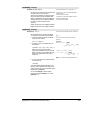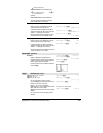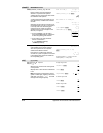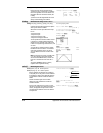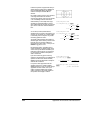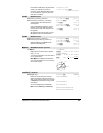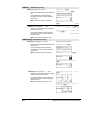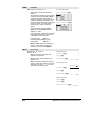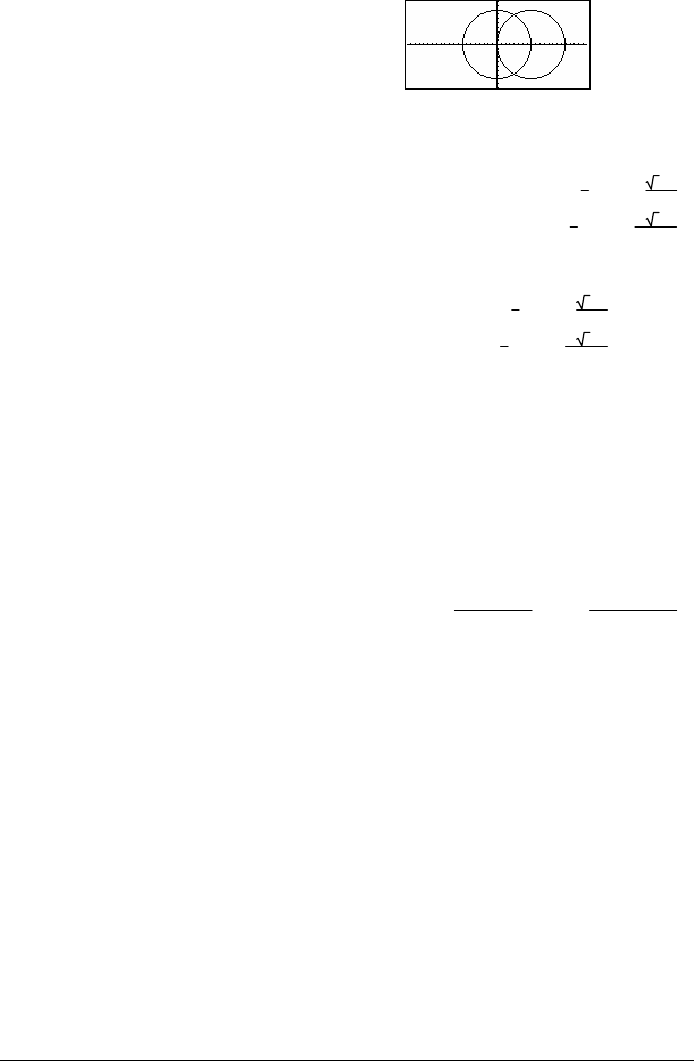
880 Appendix A: Functions and Instructions
If all of the equations are polynomials and if you
do NOT specify any initial guesses,
solve() uses
the lexical Gröbner/Buchberger elimination
method to attempt to determine all real
solutions.
For example, suppose you have a circle of radius r
at the origin and another circle of radius r
centered where the first circle crosses the positive
x-axis. Use
solve() to find the intersections.
As illustrated by r in the example to the right,
simultaneous
polynomial
equations can have
extra variables that have no values, but represent
given numeric values that could be substituted
later.
solve(x^2+y^2=r^2 and
(x
ìr)^2+y^2=r^2,{x,y}) ¸
x=
r
2
and y=
3ør
2
or x=
r
2
and y=
ë 3ør
2
You can also (or instead) include solution
variables that do not appear in the equations. For
example, you can include z as a solution variable
to extend the previous example to two parallel
intersecting cylinders of radius r.
The cylinder solutions illustrate how families of
solutions might contain arbitrary constants of the
form
@k
, where
k
is an integer suffix from 1
through 255. The suffix resets to 1 when you use
ClrHome or ƒ 8:Clear Home.
For polynomial systems, computation time or
memory exhaustion may depend strongly on the
order in which you list solution variables. If your
initial choice exhausts memory or your patience,
try rearranging the variables in the equations
and/or
varOrGuess
list.
solve(x^2+y^2=r^2 and
(x
ìr)^2+y^2=r^2,{x,y,z}) ¸
x=
r
rr
r
2
22
2
and y=
3
33
3ør
rr
r
2
22
2
and z=
@
1
or x=
r
rr
r
2
22
2
and y=
ë 3
33
3ør
rr
r
2
22
2
and z=
@
1
If you do not include any guesses and if any
equation is non-polynomial in any variable but all
equations are linear in the solution variables,
solve() uses Gaussian elimination to attempt to
determine all real solutions.
solve(x+
e
^(z)ùy=1 and
x
ìy=sin(z),{x,y}) ¸
x=
e
z
øsin(z)+1
e
z
+1
and y=
ë (sin(z)ì1)
e
z
+1
If a system is neither polynomial in all of its
variables nor linear in its solution variables,
solve() determines at most one solution using an
approximate iterative method. To do so, the
number of solution variables must equal the
number of equations, and all other variables in
the equations must simplify to numbers.
solve(
e
^(z)ùy=1 and ëy=sin(z),{y,z})
¸
y=.041… and z=3.183…




